There’s a special kind of excitement that comes with planning a surf vacation – the thought of warm tropical waters, endless sunshine, and the thrill of riding perfect waves. If you’re in the middle of your Panama trip planning, you’re already on the right track, because Panama offers one of the most diverse and rewarding surf experiences in Central America. With two coastlines – each offering its own surf seasons, wave styles, and scenery – you can chase powerful Pacific swells one day and smooth Caribbean peelers the next.
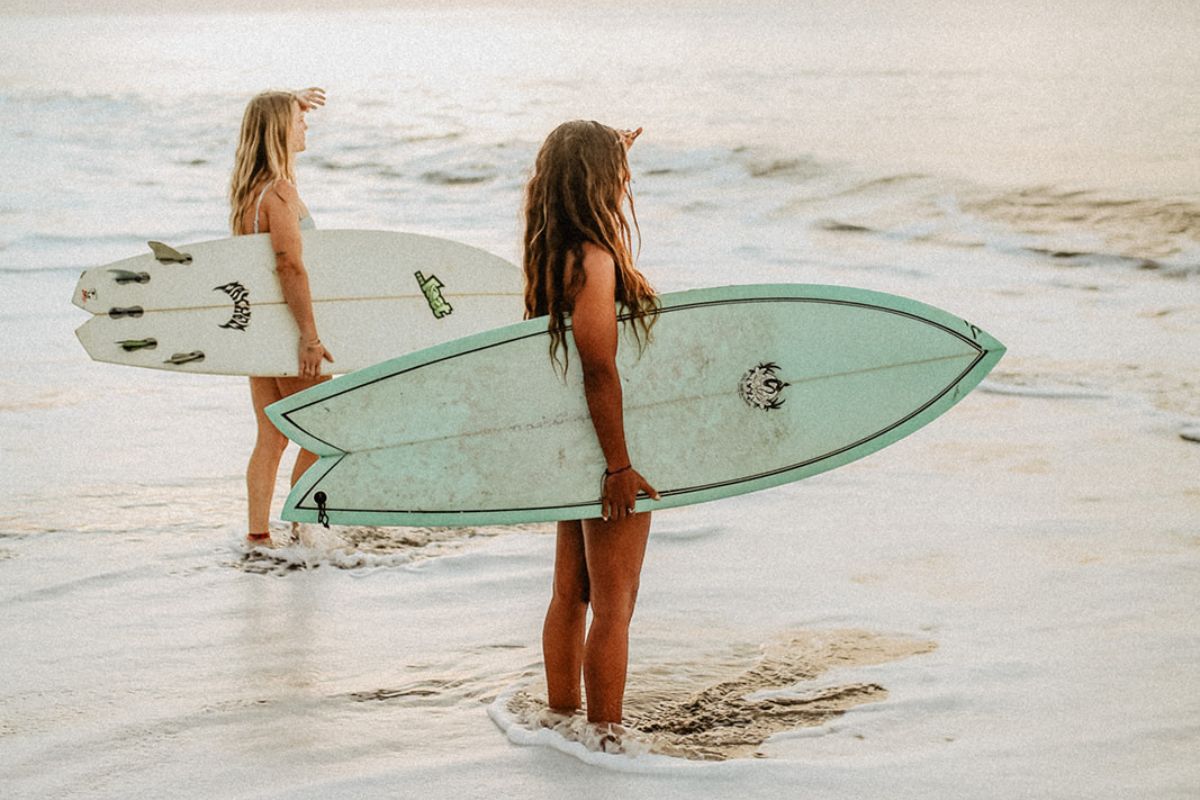
Nestled on the serene shores of Cambutal, Sansara Surf & Yoga Resort is the perfect base for your Panama surf adventure. Known for its consistent waves, uncrowed breaks, and breathtaking natural beauty, Cambutal attracts surfers of all levels. Here you can pair your surf sessions with unique wellness experiences like a digital detox to truly disconnect from the outside world, or a Fitness retreat to complement your time in the water with strength, mobility, and mindfulness training. These options make your Panama surf getaway more than just a holiday – they transform it into a complete mind-body recharge.
Part of successful Panama trip planning is knowing that a surf vacation here is about more than just waves. Between sessions, you can explore lush jungle trails, discover local fishing villages, indulge in fresh-caught seafood, or simply swing in a hammock while the sun dips into the Pacific. And with Sansara’s warm hospitality, expertly guided surf lessons, and thoughtfully designed retreats, you’ll find it easy to blend adventure, relaxation, and personal growth in one unforgettable journey.
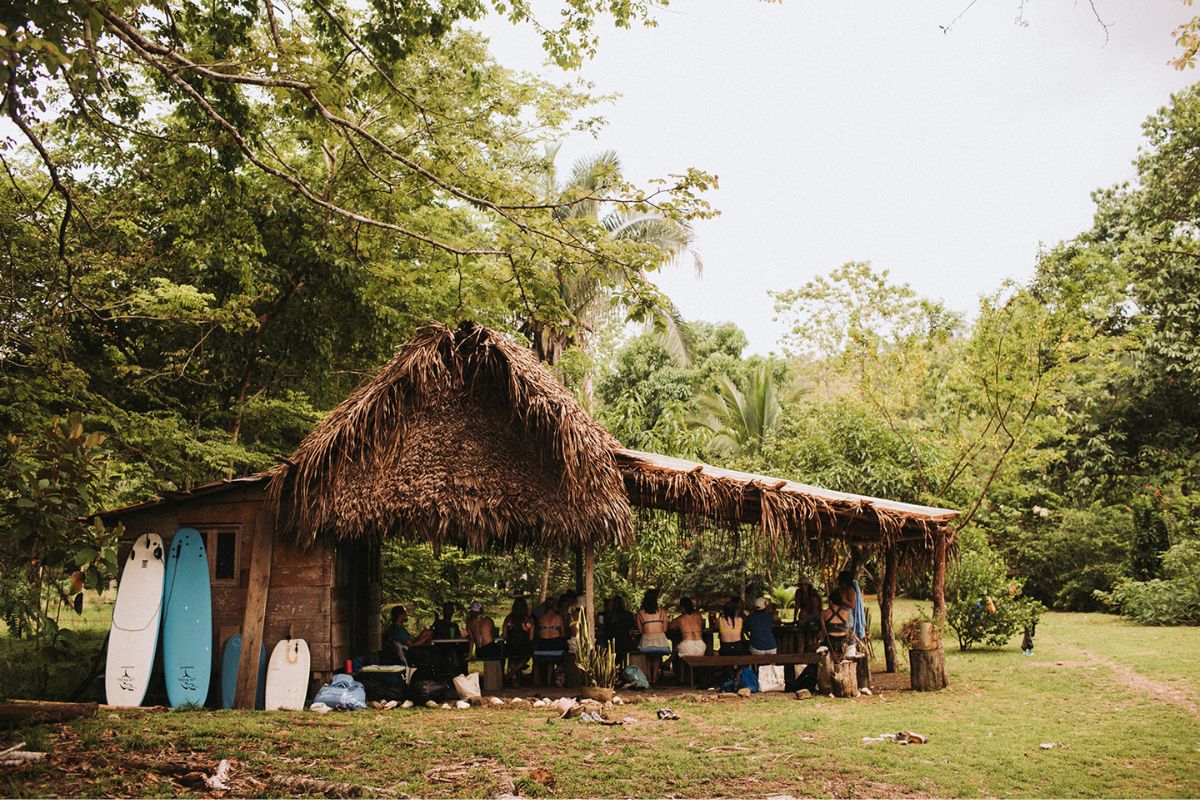
Whether you’re fine-tuning your technique, seeking your next big barrel, or simply craving a break from the everyday, Panama delivers the perfect setting. With the right preparation, packing list, and travel plan, your surf trip can be seamless – leaving you free to focus on what matters most: catching waves, connecting with nature, and embracing the pura vida lifestyle.
Before you pack your board and book your flight, a little panama vacation planning can go a long way toward ensuring a smooth and stress-free Panama surf adventure.
Timing Your Visit
Panama offers surfable waves year-round, but the best season depends on which coast you plan to explore. On the Pacific side, the prime surf season runs from April to October, when consistent southerns swells roll in and lights up breaks like Playa Venao, Cambutal, and Santa Catalina. The Caribbean coast sees its best waves from December through March, offering smaller but glassy conditions perfect for both beginners and experienced surfers looking for variety. Some travelers strategically plan their itinerary to surf both coasts, chasing the best conditions in each and allowing them to experience the country’s unique dual-ocean charm.
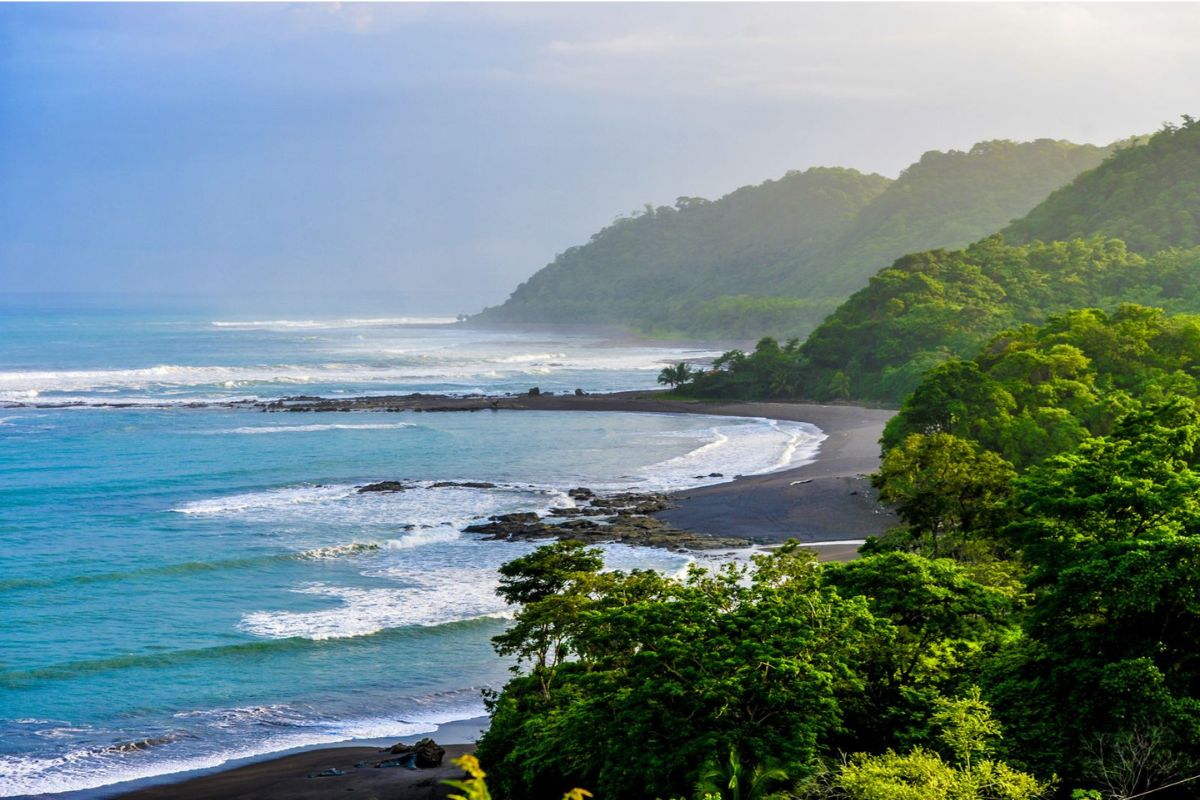
If you’re planning a Panama trip to Sansara Surf & Yoga Resort, the Pacific swell season is ideal. You’ll not only enjoy powerful, uncrowded waves but also have the option to join speciality retreats, making your Panama trip more enriching and memorable.
Documentation and Travel Requirements
Panama is an easy destination in terms of entry requirements – but it’s always worth double-checking during your Panama travel planing process. All travelers to Panama will need a valid passport with a least six months of validity remaining. Depending on your nationality, you may also need proof of onward travel (such as a return ticket) and evidence of sufficient funds for your stay. Visas are generally not required for short visits from many countries like North American and Europe, but it’s always best to confirm requirements before you go. Panama uses the U.S. dollar, so there’s no need to exchange money if you’re coming from the States. Travel insurance is strongly recommended – especially for active trips like surfing, practicing yoga, or participating in other active excursions – so you’re covered in the unlikely event of injury or unexpected changes to your plans. Look for a policy that covers water sports, medical evacuation, and trip interruption to ensure peace of mind.
Panama’s unique geography – bridging two oceans – offers a surprising diversity of surf spots, each with its own personality, wave style, and level of challenge. Understanding the main surf zones will help you choose the right destination for your skills and goals. One of the best parts of vacation planning in Panama for the perfect surf getaway is deciding which surf zone to call home for your vacation.
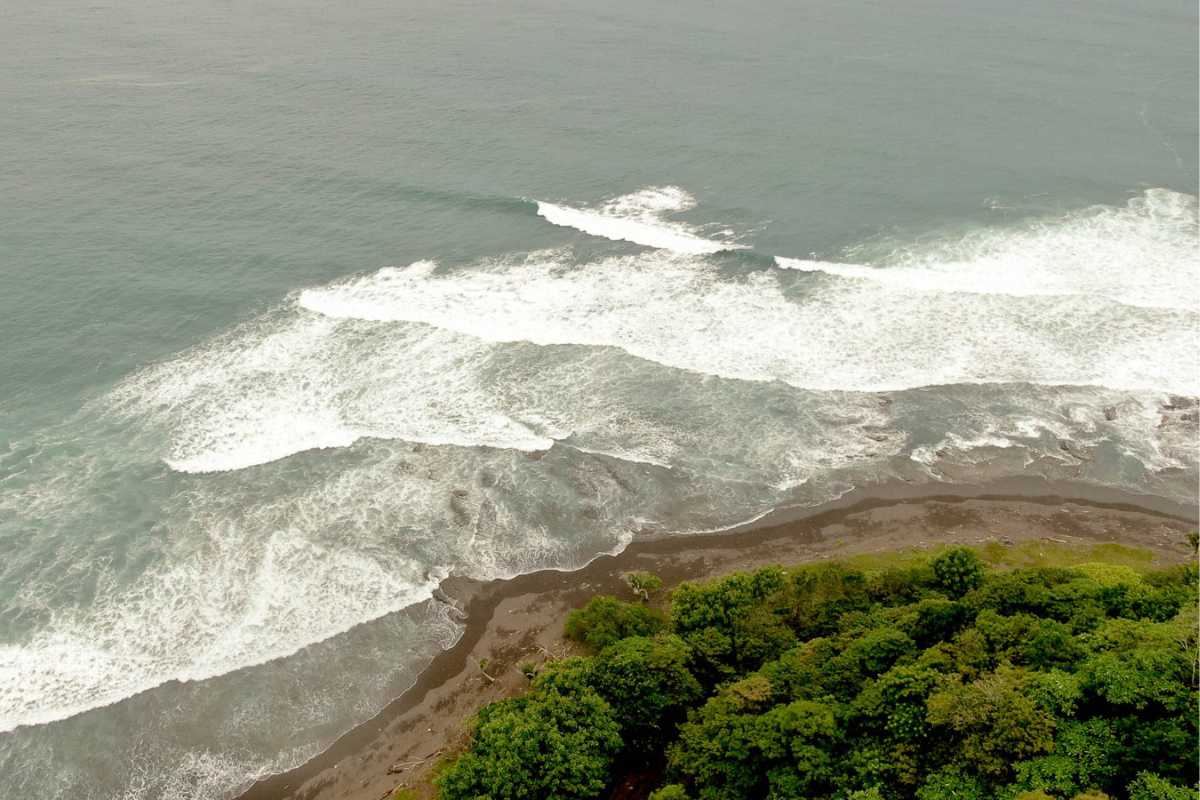
Pacific Coast
Caribbean Coast
Whether you prefer mellow, rolling waves or challenging, barreling reefs, Panama’s surf zones cater to every style. Choosing the right one will set the tone for your entire trip – and might just inspire you to return to explore them all.
Once you land in Panama, your journey to the waves begins – and how you get there depends largely on which coast and surf zone you’re headed for.
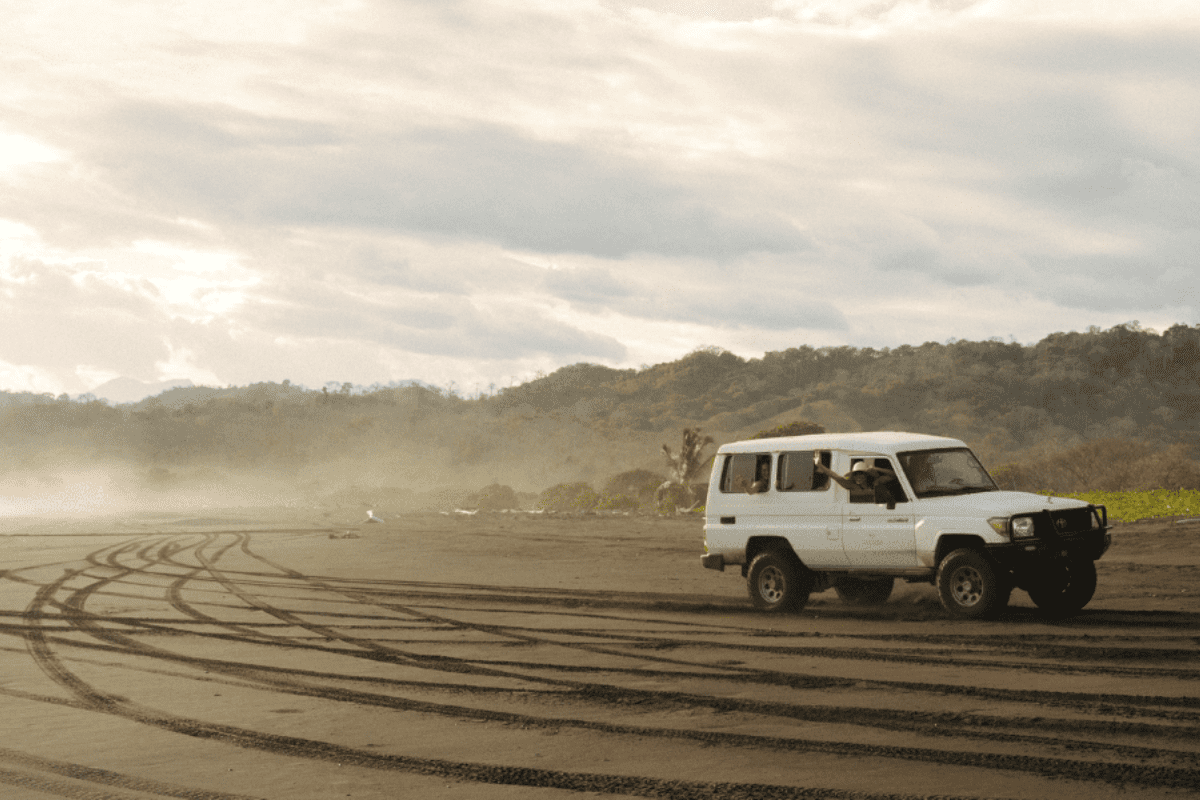
Transportation Options
Panama’s transportation network offers a mix of convenience and adventure. For the most flexibility, many surfers opt to rent a car – especially when traveling to more remote breaks like Cambutal or Santa Catalina. Roads are generally well-maintained on main routes, though expect some rugged stretches closer to less-developed beaches. For those not keen on driving, domestic flights connect Panama City to destinations like Bocas del Toro or Pedasí, while comfortable long-distance buses and private shuttles are available to most major surf hubs.
From Airport to Surf Spot
Most international travelers fly into Tocumen International Airport (PTY) in Panama City. From there:
When traveling with surfboards, confirm baggage fees and policies in advance – both domestic airlines and buses have varying rules. Planning your route ahead of time ensures you spend less energy on logistics and more time in the water.
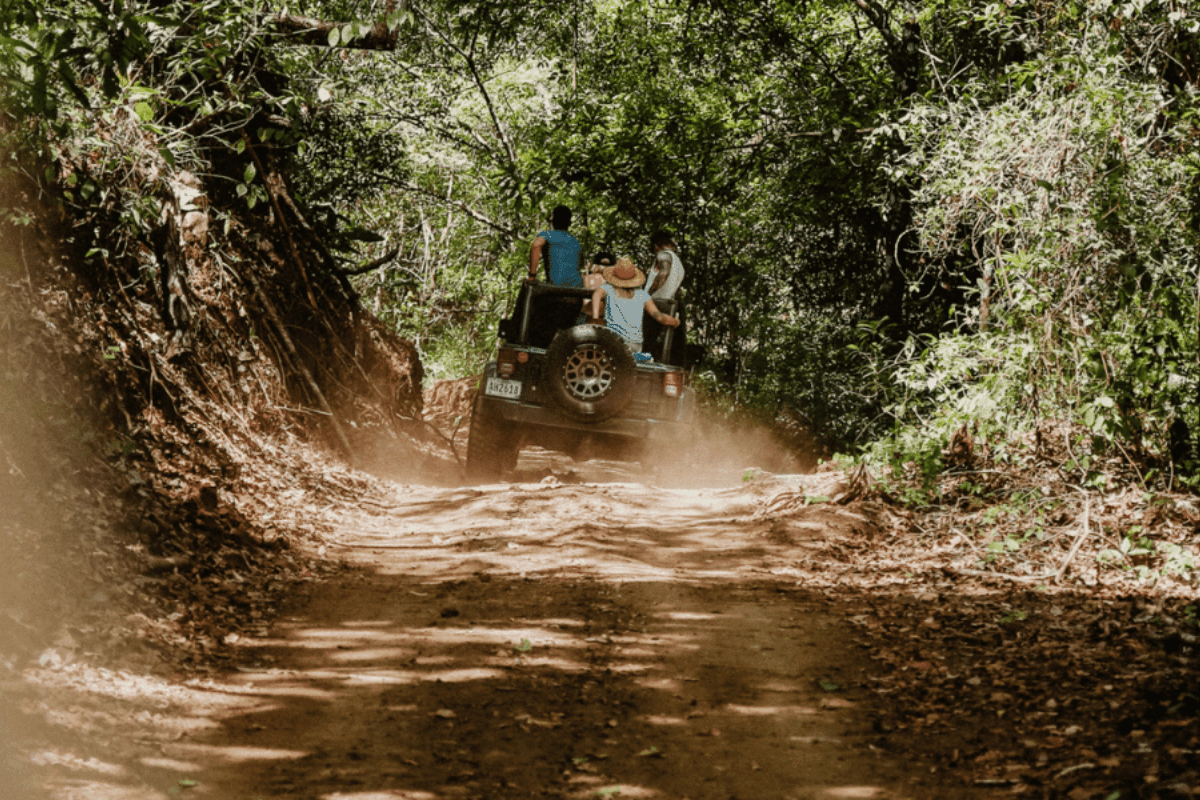
Renting a care is one of the most popular options for travelers looking to explore Panama’s diverse surf spots at their own pace. Having a vehicle gives you the freedom to set your own schedule, stop spontaneously at hidden beaches or scenic lookouts, and easily transport your surfboards and other gear without hassle. Rates for car rentals in Panama typically range between $35 and $60 USD per day, though prices can fluctuate depending on the vehicle type, rental duration, and season. For those planning to visit more remote of off-road locations – especially during the rainy season – a 4×4 vehicle is highly recommended. The rugged coastal roads near some surf breaks can be challenging for standard sedans, so opting for an SUV or 4×4 ensures both comfort and safety during your journey.
On the other hand, public transportation remains the most budget-friendly way to get around Panama. Long-distance buses and regional minibuses, known locally as colectivos, offer routes connecting major towns and surf destinations for under $15 USD, even on multi-hour trips. However, these options tend to be less convenient for travelers with bulky surfboards or multiple bags, as space is often limited and schedules can be inflexible. For surfers prioritizing convenience but looking to avoid the cost of private car rentals, shared shuttles and private transfers strike a balance. These services cater especially to surf travelers and retreat guests, offering door-to-door pickup and dro-off with vehicles equipped to handle boards. During the high season, it’s wise to book any transportation well in advance to secure availability and the best rates.
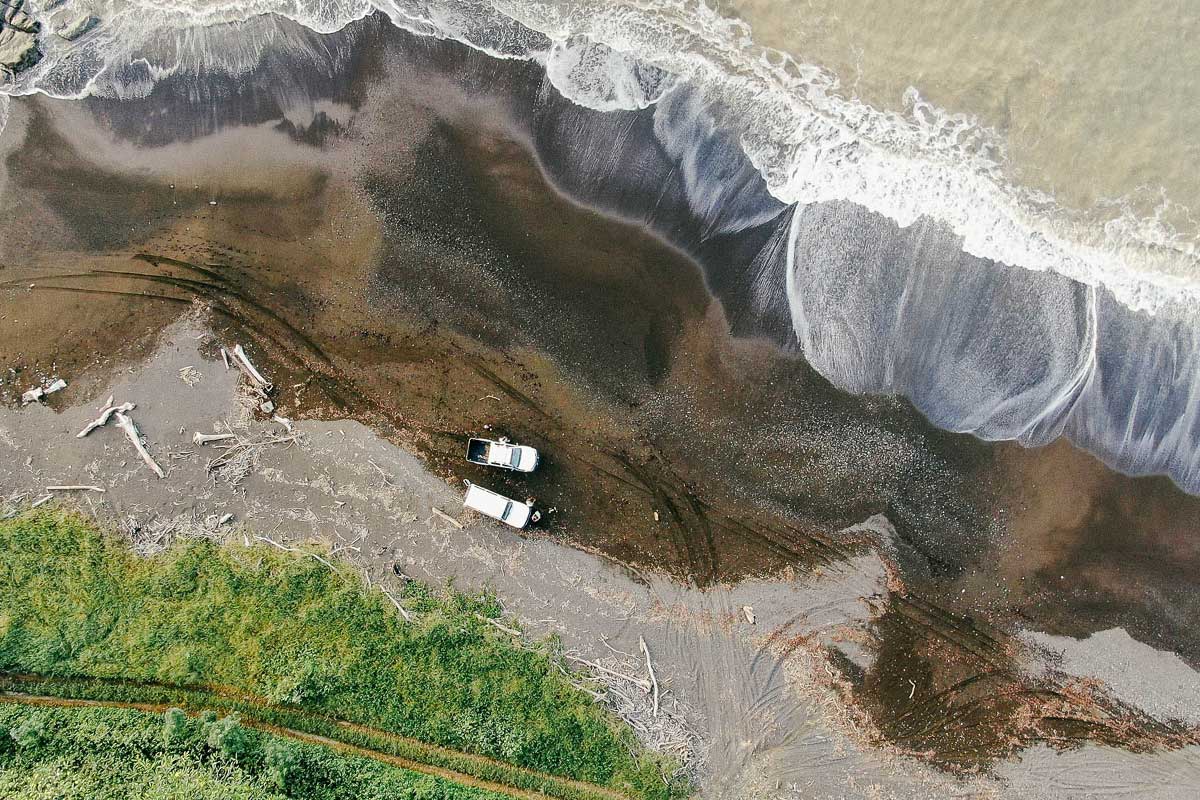
Using GPS apps like Google Maps and Waze is generally effective throughout Panama, helping you find the quickest routes to surf spots, restaurants, and accommodations. However, once you venture into rural or coastal zones – where many of the best surf breaks lie – mobile data and GPS signals can become spotty or completely unavailable. To avoid any navigation issues during your trip, it’s a smart practice as part of your panama adventure planning to download offline maps of the areas you’ll be visiting before you leave. This way, you can still access turn-by-turn directions without relying on spotty cellular connectivity in rural areas.
Panama’s road signage outside major cities and highways is fairly minimal. Instead, drivers often depend on landmarks, local directions, and word-of-mouth knowledge to find their way. Don’t be shy to stop and ask a local if you are unsure, Panamanians are inherently friendly and keen to help. If you’re driving yourself, be prepared for some common local road conditions. Speed bumps, known as topes, are plentiful and sometimes only partially marked, so it’s important to stay alert to avoid damage to your vehicle. Livestock such as cows or horses may occasionally wander only rural roads, especially near villages and farms, so caution is essential. Additionally, potholes and uneven pavement patches are common on less-traveled routes. For safety reasons, nighttime driving is generally discouraged in remote or poorly lit areas, where visibility is limited and assistance may be harder to find if needed. Always make sure you have a full charge on your cell phone before heading out so you can check directions, or call for road-side assistance if needed.
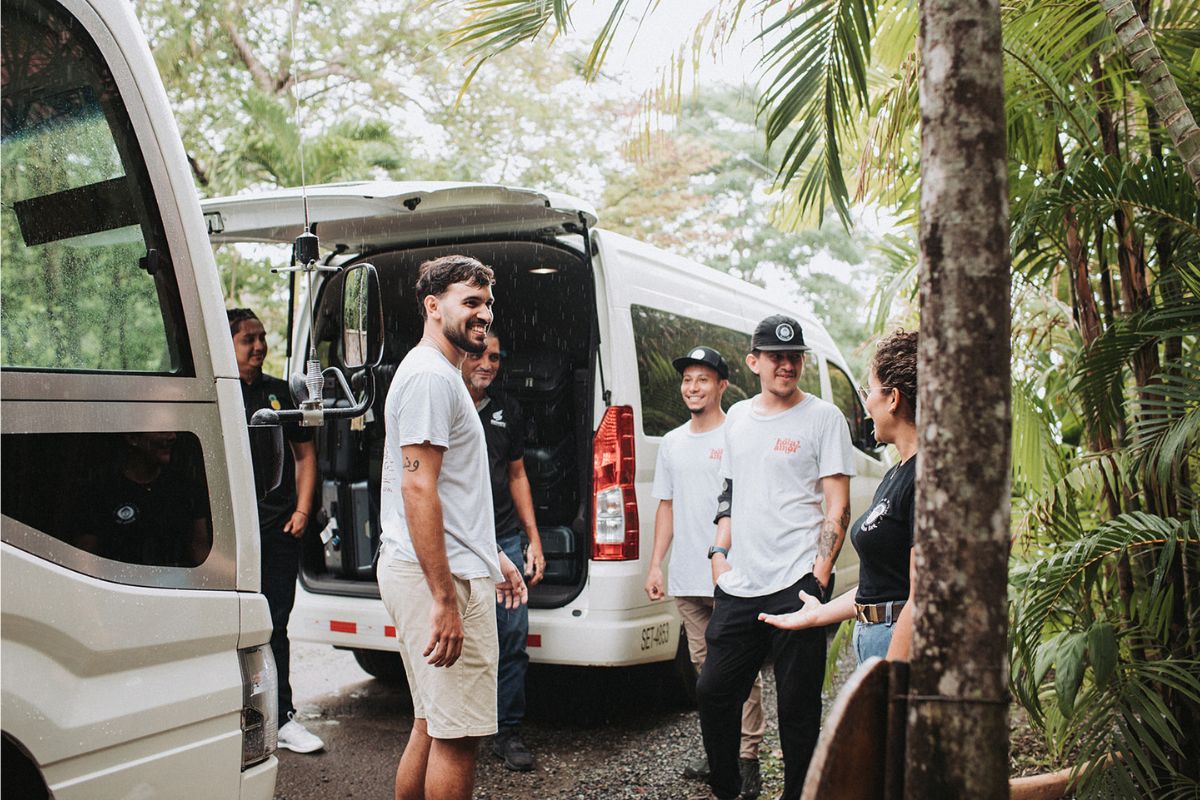
Travelers arriving in Panama typically land at Tocumen International Airport (PTY) in Panama City, which serves as the country’s main international gateway. Some domestic flights, particularly to Caribbean surf destinations like Bocas del Toro, depart from Albrook Domestic Airport, also in Panama City. From either airport, visitors have several transfer options to reach popular surf towns and resorts along both coasts.
Private shuttles and shared transfer services are commonly booked to provide comfortable, direct transportation from the airports to your final destination. For shorter trips to nearby Pacific beaches, such as Playa Chame, shuttle prices usually fall within the $40 -$50 USD range. Longer journeys to more distant locations like Cambutal often cost over $200 USD. It is important to confirm ahead of time that your chosen transport provide can accommodate surfboards and bulky gear, as not all vehicles are equipped with sufficient space or roof racks. By clarifying these details early, travelers can avoid last-minute stress and ensure their boards arrive safely along with them. Many resorts – including Sansara Surf & Yoga Resort – offer pre-arranged shuttle services that can be booked during your Panama trip planning process, ensuring your transfer is smooth, reliable, and tailored to your specific travel needs.
For those who want to skip the hassle of flying and transferring with boards altogether, Panama offers plenty of surfboard rental options near popular breaks. Resorts like Sansara Surf & Yoga have a hiqh quality quiver of boards for rent, from performance shortboards to funboards and longboards, saving you the headache or airline oversize baggage fees and transportation restrictions. Renting locally also allows you to select a board that’s perfectly suited for the current swell and conditions – something even the most experienced surfers appreciate when planning the perfect Panama surf trip.
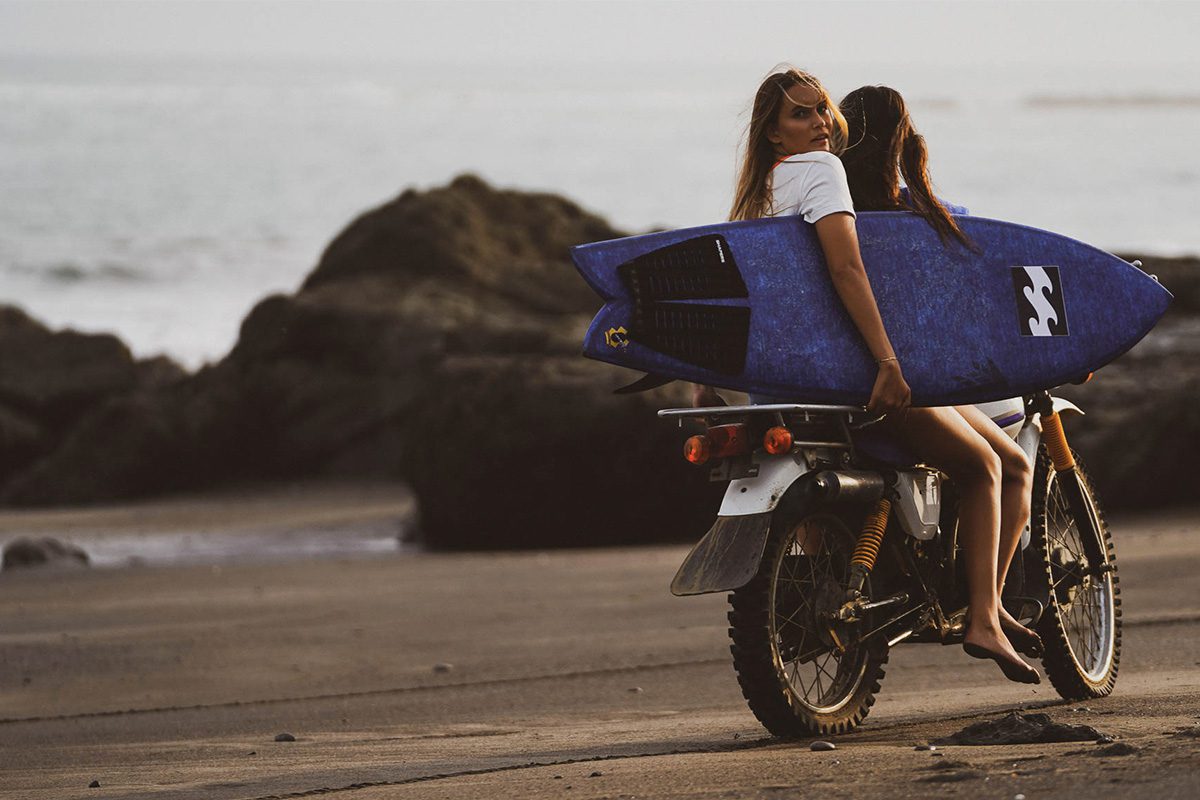
Once you arrive in Panama, getting around locally is straightforward, but some insider tips can make your experience easier and safer. In urban centers and larger towns, taxis are readily available and generally affordable, but fares are almost always negotiated before the ride rather than metered. It’s a good idea to agree on a price upfront to avoid misunderstandings. For rides within Panama City, Uber is an option and tends to offer more predictable pricing, but note that ride-sharing apps are not widely available in rural or coastal surf towns.
Along Panama’s coast, particularly in smaller villages and surf areas, moto-taxis (motorcycle taxis) may be an alternative and efficient way to get around short distances. They offer a quick and inexpensive alternative to cars, especially on narrow or unpaved roads. However, safety should always be a priority: helmets are often available but may not be provided by every driver, so insist on wearing one whenever possible. For peace of mind, it’s best to avoid hitchhiking and instead rely on reputable transportation providers recommended by your resort or fellow travelers. Local knowledge and word-of-mouth remain invaluable resources when navigating Panama’s less traveled areas.
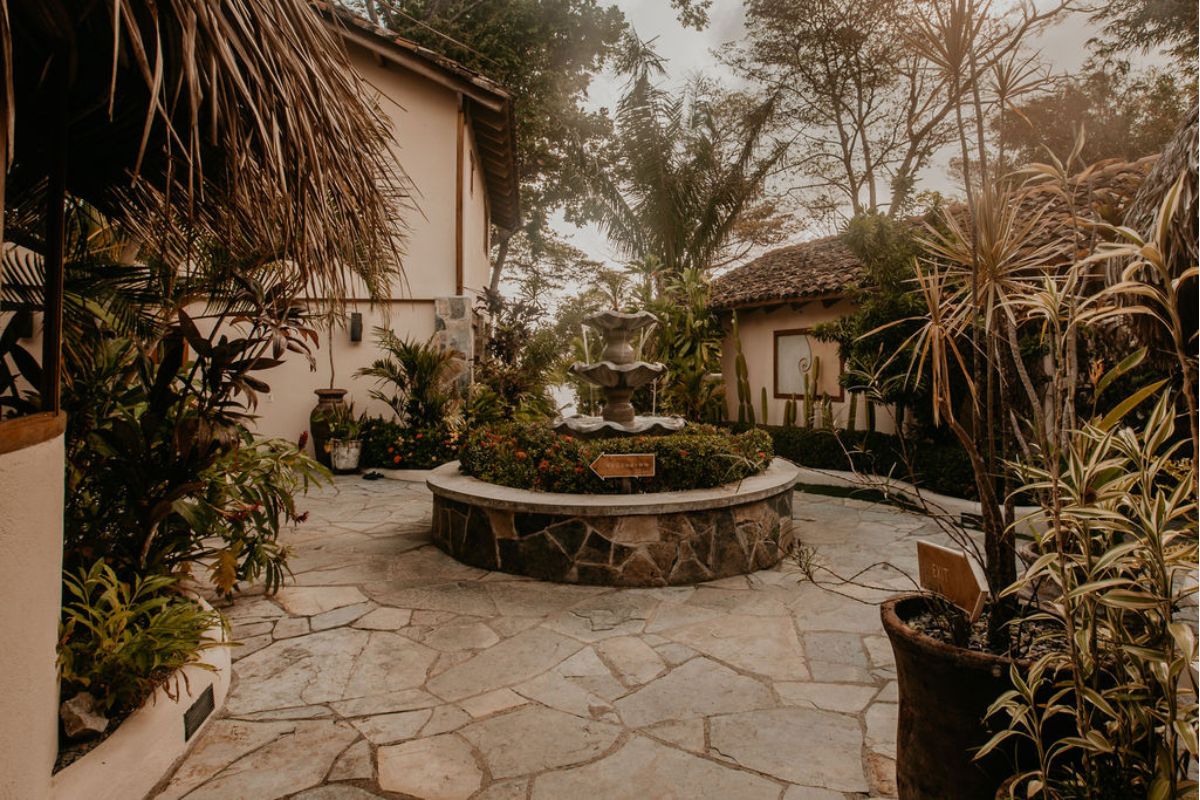
Sansara Surf & Yoga Resort is nestled in the tranquil village of Cambutal on Panama’s picturesque Azuero Peninsula. The journey from Panama City to Sansara typically takes about 5.5 hours by car, following the well-maintained Pan-American Highway before turning onto a scenic coastal road that winds through lush jungle and ocean views. This drive offers a great introduction to Panama’s natural beauty, but it can be long and tiring – especially if you’re carry surfboards and luggage.
To make your arrival as comfortable and hassle-free as possible, Sansara offers private shuttle services that can be arranged directly through the resort. These shuttles are especially equipped to transport surfboards and guests safely, with knowledgeable drives familiar with the best routes. The resort team is also available to help coordinate domestic flights to nearby airports followed by ground transport, giving you flexible options based on your itinerary and preferences. Whether you prefer a relaxing road trip or a quickly flight-plus-drive combo, Sansara’s transport services are designed to take the stress out of the logistics, so you can focus on the anticipation of catching waves and immersing yourself in the surf lifestyle.
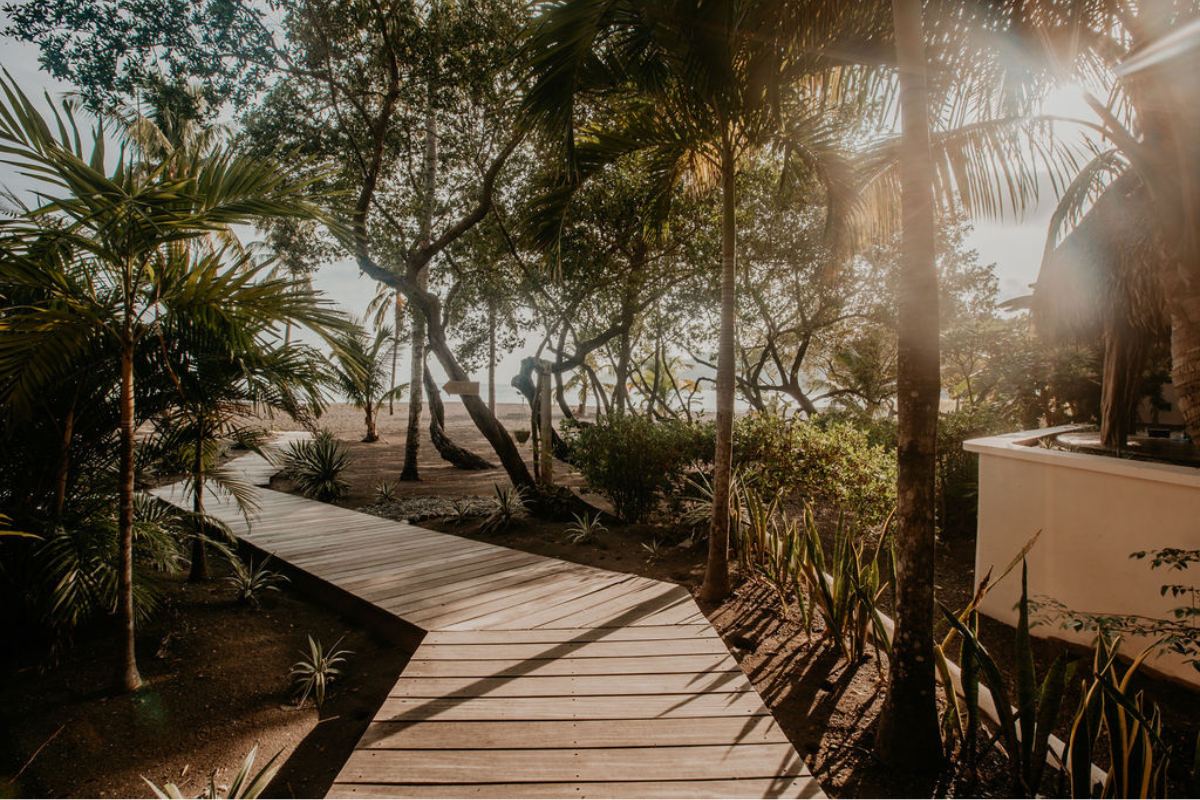
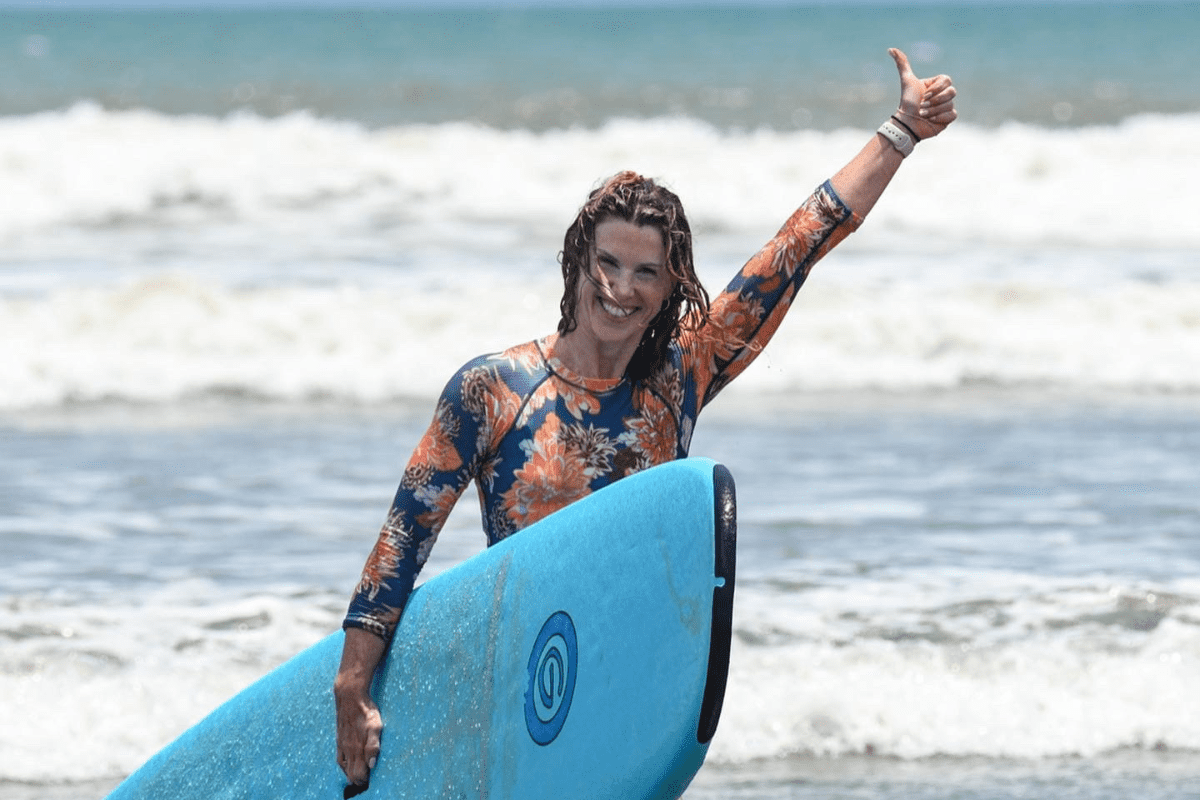
As you bring together all the pieces of your Panama adventure planning, it’s easy to see why this vibrant Central American country captures the hearts of so many travelers. From bustling Panama City with its glittering skyline and historic Casco Viejo streets, to the remote fishing villages and untouched beaches along the Pacific and Caribbean coasts, the variety of experiences is staggering. Whether your interests lie in surfing world-class waves, hiking cloud forests, discovering indigenous cultures, or simply unwinding at a luxury yoga retreat, thoughtful preparation is what turns a good vacation into an unforgettable journey.
When it comes to Panama planning, the key is to start early and prioritize what matters most to you. If your dream is to spend sunrise paddling into perfect waves, research seasonal surf conditions to align your trip with the best swell windows. If your focus is on culture, festivals like Carnaval in Las Tablas or the traditional Corpus Christi celebrations in Villa de los Santos might dictate your travel dates. For wildlife lovers, dry season months often offer the best cahnce to spot monkeys, sloths, and exotic birds. By deciding your must-do activities early, you can structure the rest of your itinerary around them and make sure your Panama travel planning supports your priorities.
Another important part of planning a trip to Panama is balancing adventure with rest. This is a country where you can go from trekking through the rainforest in the morning to sipping cocktails on the beach by sunset, so it’s tempting to try to do it all. However, the most memorable trips often leave space for serendipity – those unexpected encounters and unplanned detours that happen when you’re not rushing from one activity to the next. A good trip planner for Panama will always account for the downtime, giving you a chance to soak up the local rhythm and connect with the people and places around you.
Travel planning for Panama should also take into account the country’s diverse geography and transportation logistics. While distances may look small on a map, travel times can be longer than expected due to winding mountain roads, road construction, or weather-related delays. This is where understanding your transportation options becomes critical – whether it’s renting a car for flexibility, bookings shared shuttles for convenience, or using domestic flights to save time on longer routes. If you’re heading to more remote destinations like Cambutal or the San Blas Islands, building in buffer time can keep your trip stress-free if schedules shift.
When planning trips to Panama, accommodations are another area worth careful consideration. Panama offers everything from budget-friendly hostels to eco-lodges and high-end boutique resorts. If you’re seeking a deeper connection with nature, staying in locally owned lodges or off-the-beathen-path retreats can immerse you in the landscape and culture. For those planning a surf or yoga-focused getaway, specialized retreats like Sansara Surf & Yoga offer tailored experiences that include gear rentals, lessons, healthy meals, and a built-in community of like-minded travelers. Choosing your accommodations early can also help you secure the best rates, especially during peak travel periods.
A well-rounded Panama travel planning process also means factoring in practicalities. Check visa requirements for your nationality, ensure your passport has at least six months of validity, and consider travel insurance to protect agains unexpected disruptions. Panama uses the U.S. dollar, which makes transactions straightforward for many travelers, but it’s still wise to carry small bills for rural areas where change can be limited. While Spanish is the official language, English is spoken in many tourist hubs, though learning a few basic Spanish phrases can go a long way in connecting with locals.
No set of Panama travel tips would be complete without mentioning the importance of packing strategically. Lightweight, breathable clothing is ideal for the tropical climate, but don’t forget a rain jacket if you’re traveling during the wet season. Sun protection – hat, sunglasses, and reef-safe sunscreen – is essential year-round, and if you’re planning water activities, quick-dry gear and water shoes can be a game-changer. Depending on your itinerary, you might also consider packing insect repellent, a reusable water bottle, and a dry bag for boat trips or beach days.
Finally, remember that planning a Panama trip is not just about logistics – it’s about setting the stage for the kind of experiences you’ll treasure for years to come. Leave room for curiosity, stay open to local recommendations, and embrace the country’s blend of modern vibrancy and traditional charm. Whether your journey takes you deep into the mountains of Boquete, across the turquoise waters of Bocas del Toro, or down the wild Pacific coastline to Cambutal, the moments that will stay with you are often the ones you can’t predict.
So, as you finish your Panama adventure planning, think of it as crafting your personal story – one that unfolds across rainforests and beaches, city streets and quiet villages. Your thoughtful preparation will give you the freedom to explore confidently, while your openness to the unexpected will ensure your trip is rich with discovery. Panama rewards both planners and wanderers, structured itineraries and spontaneous detours. When you approach your journey with intention and curiosity, you’ll find that the real magic of planning a surf trip to Panama lies not just in the destinations you reach, but in the experiences you create along the way.